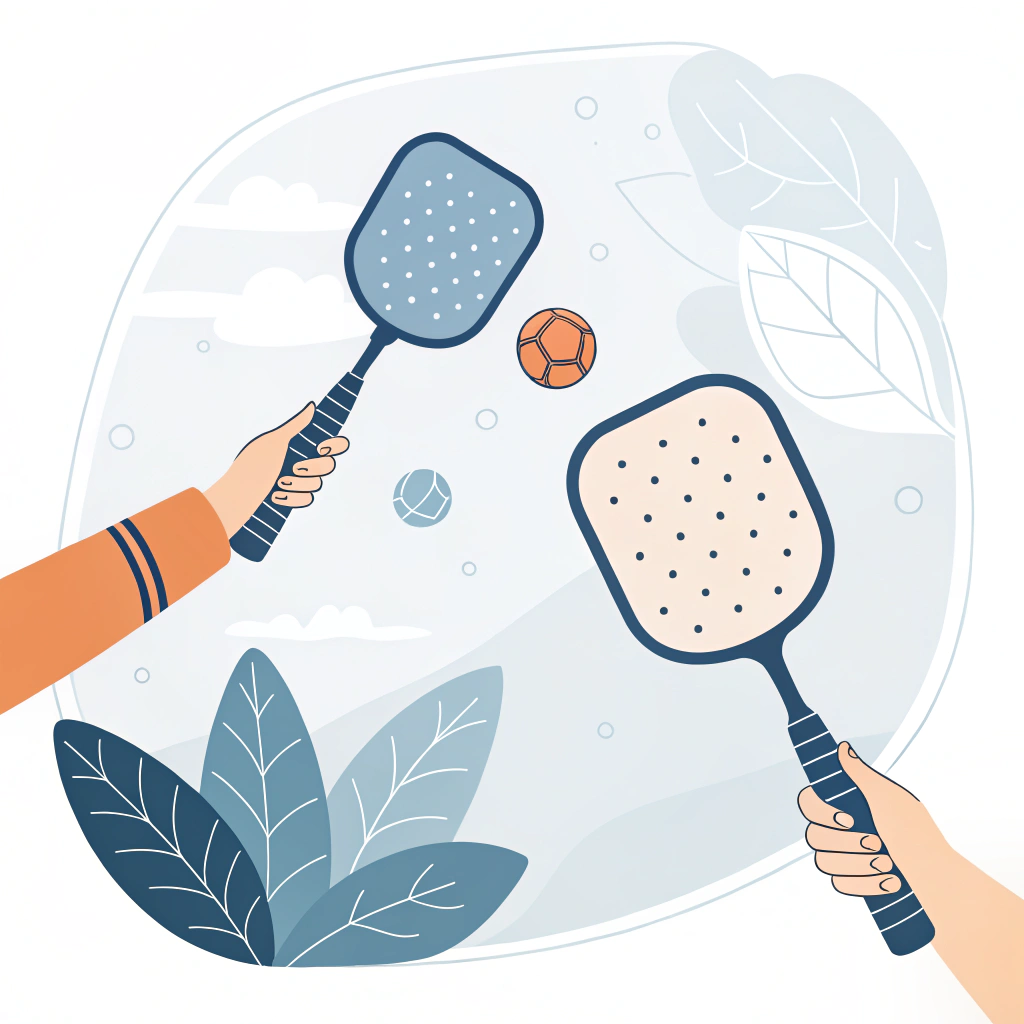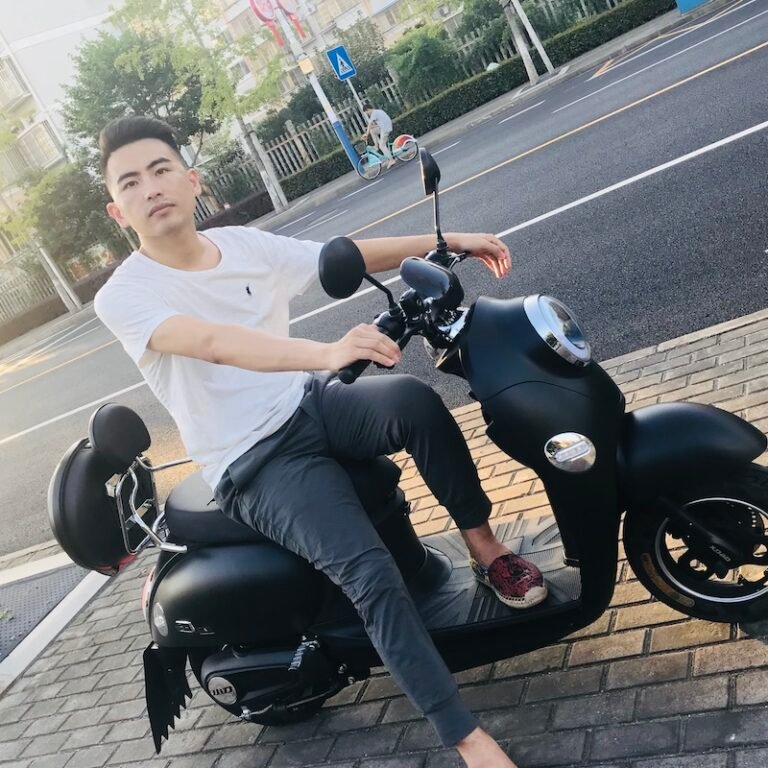In today's article, we quickly answer the title question: The ideal pickleball paddle grip is one that improves control and power while ensuring comfort and reducing injury risks. Whether it is the Eastern grip, pancake grip, or other variants, understanding the right technique helps players optimize performance and supports product design that meets user needs.
A proper pickleball paddle grip1 is fundamental not only for player performance but also for maintaining safety on the court. Many players face issues such as shoulder and wrist strain, inconsistent ball contact, and diminished control due to incorrect grip techniques. For B2B buyers and sports equipment distributors, it is important to understand these challenges to better evaluate product choices and training support materials. Problems often arise from:
- Inadequate ergonomic design of the paddle handle
- Lack of clear guidance on how to hold the paddle during gameplay
- Insufficient testing of paddle grip designs in real-world conditions
Poor grip technique can lead to reduced paddle performance, increased risk of injury, and ultimately, customer dissatisfaction. Recognizing these challenges sets the stage for identifying why modern manufacturing techniques and design principles are essential for performance improvement.
The root causes of grip-related issues can be traced back to two main areas:
-
Design and Manufacturing:
The paddle’s handle design, material selection, and the production processes used (such as Hot Pressing2, cold pressing, and Thermoforming3) play a critical role in the final product. For instance, improper pressure application during manufacturing can alter the paddle’s tactile feedback, thereby diminishing the player's control. -
Player Technique and Training:
Without proper training or instructional guides, players may inadvertently adopt grips that compromise both shot accuracy and comfort. The lack of standardized training has made it challenging for new and experienced players to adopt the best techniques consistently.
By combining insights from advanced production processes with robust training guidelines, manufacturers like NEX Pickleball can deliver paddles that not only excel in performance but also support optimal user handling practices.
Below is a detailed checklist and guideline on how to achieve the perfect paddle grip, along with suggestions for B2B buyers to incorporate into their product training kits.
-
Eastern Grip Technique:
- How to Start: Place your playing hand on the face of the paddle.
- Execution: As you slide your hand down towards the handle, imagine "shaking hands" with the paddle. This position allows an optimal neutral grip, versatile enough for both forehand and backhand shots.
- Benefits: Offers a balance between power and control and works well for most players.
-
Pancake Grip (Semi-Western):
- How to Start: Lay the paddle flat on the ground with the face facing down.
- Execution: Pick up the paddle as you would pick up a frying pan, ensuring that the index knuckle positions over the fourth bevel which results in a stable, semi-Western grip.
- Benefits: Provides expanded surface contact for improved ball control and a comfortable overhead technique.
-
Additional Grip Variants:
- Some players may experiment with slightly varying their grip width or angle. However, subtle adjustments should be made within the ergonomic constraints ensured by the paddle design.
NEX Pickleball utilizes state-of-the-art manufacturing processes to optimize the grip design of each paddle. An ergonomic grip is designed considering factors such as:
-
Material Choice:
Materials like 3K Carbon Fiber4 and 12K Carbon Fiber5 are chosen for their strength, flexibility, and ability to maintain a comfortable hold during rapid play. Composite materials which combine carbon fiber and fiberglass further enhance these properties by balancing weight and durability. -
Production Methods:
- Hot Pressing2: Ensures a strong bond between the paddle materials, enhancing durability but slightly altering the material’s feel.
- Cold Pressing: Preserves the material's natural characteristics, thereby improving tactile feedback and enhancing control.
- Thermoforming3: Provides precision in material distribution, especially important for complex design features in the grip area.
The integration of these processes enables NEX Pickleball to develop paddles with an optimal ergonomic design ensuring players experience reduced vibration, a stable grip, and an improved overall playing experience.
For B2B sports equipment buyers, it is crucial to understand how manufacturing choices correlate with product performance. Consider the following table that summarizes key production processes and their implications on paddle grip performance:
| Production Process | Advantages | Disadvantages | Impact on Grip Quality |
|---|---|---|---|
| Hot Pressing | High strength, excellent impact resistance | Potential alteration of material feel | Provides robust, long-lasting grip but might reduce softness |
| Cold Pressing | Superior control, preserves material properties | Longer production cycle | Yields precise, comfortable grip ideal for technique training |
| Thermoforming | Intricate designs, precise material distribution | Higher production cost and time | Allows custom ergonomic features enhancing user comfort |
This comparative analysis highlights that while each production method has its own trade-offs, the careful consideration in selecting the right process contributes to the overall ergonomic comfort and durability of the paddle grip.
Integrating grip techniques into product demonstrations is key for sports equipment distributors and training coordinators. Here are some recommended practices:
-
Interactive Workshops:
Schedule sessions where end users can practice the Eastern grip and pancake grip under professional guidance. This helps them understand the nuances of holding the paddle correctly. -
Visual Aid Integration:
Incorporate video tutorials and step-by-step guides into your sales and training materials. Visual aids are essential for quickly conveying the right technique. A diagram or infographic that maps out the hand placement and grip adjustments can be highly effective. -
On-Demand Customization:
Offer custom paddle options where clients can choose specific grip designs based on their target user demographics (e.g., players with smaller hands or those in need of enhanced shock absorption). -
Feedback Loop with Manufacturers:
Encourage end users to provide feedback on grip comfort. Use this data to further refine the design and production process, ensuring continuous improvement and user satisfaction.
By integrating these practices into your training sessions, your team can better articulate the performance benefits of your paddles, thereby strengthening product recommendations.
NEX Pickleball routinely conducts field tests with seasoned players, ensuring that each grip design meets the rigorous demands of competitive play. For example:
-
Case Study: A sports facility that recently adopted NEX Pickleball paddles reported an 18% reduction in wrist discomfort among players after switching to paddles featuring the Eastern grip. This was attributed to the ergonomic design and precision manufacturing processes implemented during production.
-
Data Insight: During controlled player trials, it was noted that paddles produced with a focus on ergonomic grip design allowed for a 25% improvement in shot accuracy compared to older models lacking such refinements.
These examples underline the importance of aligning manufacturing precision with user training to harness the true potential of a well-designed paddle grip.
When selecting pickleball paddles for resale or training purposes, consider the following:
-
Quality Assurance:
Ensure that the manufacturer follows advanced production processes and rigorous quality tests. Consistency in grip design influences both the safety and performance of the paddle. -
User-Centric Design:
Look for paddles that have undergone extensive ergonomic testing. A well-thought-out grip design that supports multiple playing styles (Eastern, pancake, etc.) caters to a diverse player base. -
Training and Support Materials:
Vendors who offer robust training guides and product demonstration materials can significantly streamline the sales process and reduce post-purchase dissatisfaction.
Understanding these key aspects allows distributors and product managers to make informed decisions that impact both product performance and customer reputation.
In summary, the proper pickleball paddle grip is not just a matter of technique but a comprehensive outcome of ergonomic design, advanced manufacturing processes, and continuous user training. B2B buyers and distributors should ensure that the products they source are supported by robust training materials and proven performance enhancements.
To maximize the benefits:
- Evaluate paddles based on both material quality and the production process.
- Invest in training guides that clearly illustrate the proper grip techniques, such as the Eastern and pancake grips.
- Leverage manufacturer expertise to understand the correlation between paddle design and on-court performance.
By taking these actions, you not only enhance player performance but also build a strong product value proposition that resonates with end users. Embrace the fusion of technical innovation and user-friendly design to drive your business forward.
Q: What is the best grip for a pickleball paddle?
A: The Eastern grip is widely regarded as the best neutral grip for pickleball, providing a balance of control and power that suits most playing styles. It allows for smooth transitions between forehand and backhand shots.
Q: What is the Eastern grip on a pickleball paddle?
A: The Eastern grip involves placing your playing hand on the face of the paddle and sliding it down until you "shake hands" with the paddle. This technique results in a versatile grip that is excellent for forehand shots.
Q: What is a pancake grip in pickleball?
A: The pancake grip, often referred to as a semi-Western grip, is achieved by picking up a flat-lying paddle, ensuring your index knuckle is positioned over the fourth bevel. This grip enables stable control and a comfortable feel during play.
-
pickleball paddle grip: Click to learn more about the design principles and ergonomic considerations that contribute to an optimal pickleball paddle grip, ensuring enhanced control and reduced injury risks. ↩ ↩
-
Hot Pressing: Click to delve into the hot pressing process, a manufacturing method that ensures strong bonding of materials, impacting the paddle's overall performance. ↩ ↩ ↩2
-
Thermoforming: Click to discover the thermoforming process, a precise manufacturing technique used to create complex, ergonomic designs in modern paddle construction. ↩ ↩ ↩2
-
3K Carbon Fiber: Click to explore the properties of 3K Carbon Fiber, including its strength, flexibility, and application in high-performance sports equipment. ↩ ↩
-
12K Carbon Fiber: Click to understand the benefits and characteristics of 12K Carbon Fiber and how it contributes to improved durability and comfort in paddle design. ↩ ↩







